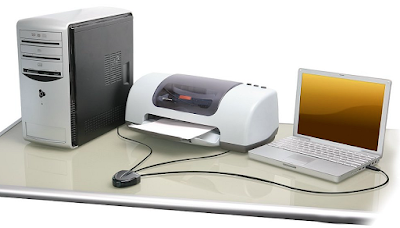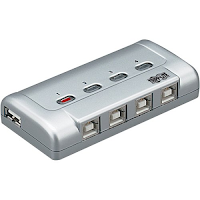Share one USB printer with more than one PC
 |
| Share a printer easily! |
This device monitors the USB connections from all the connected
computers, and when it detects that one of them is sending a print job
to the printer it automatically connects that computer to the printer.
 There is a choice of 2-port and 4-port models depending on how many
computers you have to connect to the printer.
There is a choice of 2-port and 4-port models depending on how many
computers you have to connect to the printer.
 There is a choice of 2-port and 4-port models depending on how many
computers you have to connect to the printer.
There is a choice of 2-port and 4-port models depending on how many
computers you have to connect to the printer.  Installation is very simple as these devices are Plug and Play types that do not require additional skills. You need to plug the computers and the printer into the switch box and then
install the software on each of the computers.
Installation is very simple as these devices are Plug and Play types that do not require additional skills. You need to plug the computers and the printer into the switch box and then
install the software on each of the computers.
And the good news is that you can get a 2-port switch for as less as
$20! Just one thing to remember is that some models have switches that need to be manually turned on or off in order to make the connection to the specific computer you want to
print from.
However there are automatic models that you can choose and they come with an
automatic switch. The difference in price is very less, but the ease of use and time saved is huge.
Note: The links in this post are affiliate links.









